Tsunami Warning triggered mass evacuation on Kauaʻi, resulting in some gridlock, visitor confusion
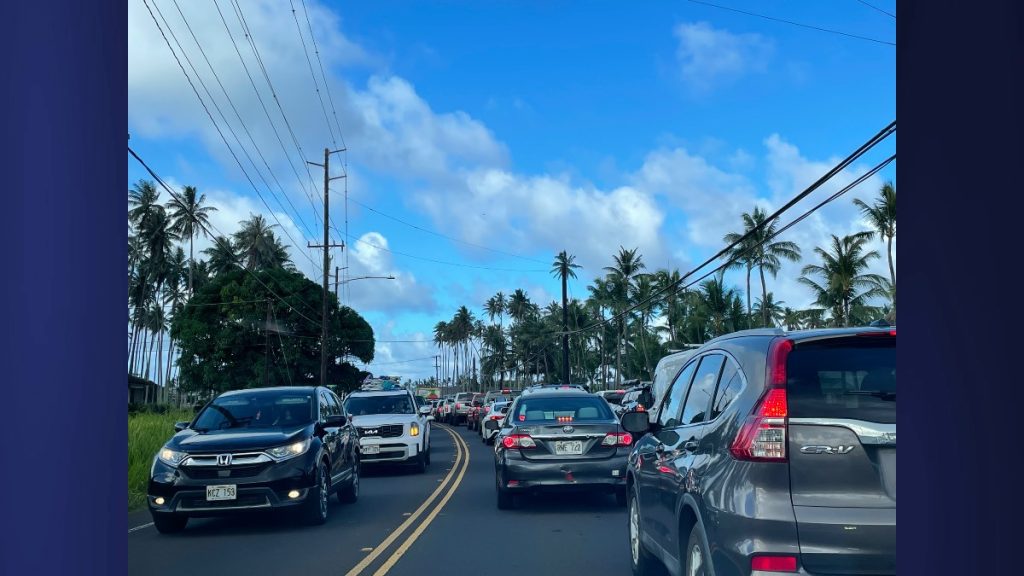
It had been more than a decade since Kauaʻi residents and its officials have had to deal with responding to the arrival of an expected tsunami. So how did it go on Tuesday? Depends upon whom you ask.
The Kaua‘i Emergency Management Agency stated in an email to Kauaʻi Now that coordination with public communications; local, state, and federal partners; and activating shelters across the island was timely and precautionary for the tsunami watch turned warning, which were issued following an 8.8 magnitude earthquake that struck near the coast of Kamchatka, Russia.
“Overall, everything from public notification, evacuation, refuge area activations, and demobilization efforts went well,” the agency said.
And to ensure community safety, the agency highlighted the “proper closures of roads and bridges” were implemented.
KEMA administrator Elton Ushio said the Emergency Operations Center and other emergency responders train year-round for “these and other scenarios. Still, real-world threats like yesterday’s Tsunami Warning always test our collective readiness and limits.”
He said KEMA was grateful to all of its partners and the public for “contributing to what appears to have been a safe and well-coordinated response from start to finish.”
“Nonetheless,” Ushio added, “we will be conducting an internal after-action review to identify areas for improvement and implement lessons learned — and we encourage our partners and the public to do the same.”
But around the island, there was some confusion, with many roads gridlocked with residents and visitors trying to get to higher ground.
It began at approximately 1:25 p.m., when the Pacific Tsunami Warning Center issued a tsunami watch for the island of Kaua’i and the State of Hawai’i after the earthquake struck.
About an hour later, at 2:44 p.m., cell phones buzzed with an alert from the National Weather Service, which was issuing the first notifications that the tsunami watch had been upgraded to a tsunami warning.
At 3 p.m., Kauaʻi emergency management issued a news release about the Tsunami Warning, stating: “You are in danger. Get away from coastal waters.
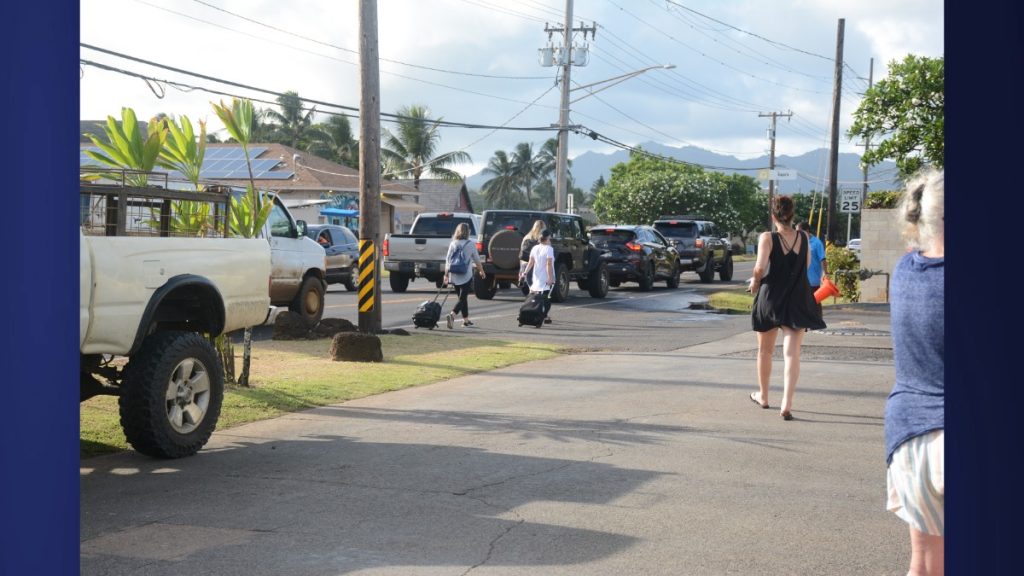
“Officials are advising the public to prepare and complete their evacuations well before the first wave, preferably two hours prior.”
At 3:25, Kauaʻi emergency management said: “We are sounding the sirens to alert the public of possible flooding inundation zones.”
The Kaua‘i Police Department shut down the westbound side going across Hanalei Bridge before 4 p.m., but kept the eastbound lane open for evacuation.
The county opened nine tsunami refuge areas across the island at 4:15 p.m., with approximately 1,800 individuals utilizing them, including about 150 people who stayed in the overnight, the county said.
Kauaʻi Mayor Derek S.K. Kawakami thanked all responders involved in the effort, including Joel Guy of the Hanalei Initiative, Lei Wann of Limahuli, and the Hashisaka Family “who took it to the next step by taking in and taking care of those who could not evacuate to official tsunami refuge areas.”
But despite the quick notifications, it didnʻt take long for the limited number of roads on Kauaʻi to get packed with fleeing motorists, some having no idea where to go. Kuhio Highway turning into a congested parking lot with bumper-to-bumper traffic in both directions.
Anela Delima, store manager at Aloha Petroleum gas station in Kapa’a, was navigating cars through the gas station when she decided to shut down the pumps at 5:25 p.m. and evacuate herself and her workers.
“At this point, we are the only station open,” she said. “We do have over 4,000 gallons of gas, but my employees need to get to safety.”
Lawrence Mundon, a resident of Kapa’a, had just arrived from Hanalei and was quickly pumping gas at Aloha Petroleum as the station was closing.
“This traffic is ridiculous,” he said. “Everyone is driving all around. It seems like they don’t know where to go.”
Mundon immediately continued to higher ground after pumping more than $75 worth of gas.
“We understand the frustration many experienced with traffic during the evacuation,” the Kauaʻi Emergency Management Agency said in an email. “Kaua‘i Police Department personnel were strategically placed around the island to help manage traffic flow and support a safe evacuation process.
“Unfortunately, given the limited roadways and geography of our island, congestion in certain areas, especially during emergency situations, is often unavoidable. We truly appreciate the community’s patience and cooperation.”

By approximately 5:40 p.m., Kaua’i’s Eastside was a ghost town, with parking lots empty and all businesses closed.
Police cruisers could be heard and seen driving up Kuhio Highway, blaring evacuation instructions and orders.
Coastal roads and 11 bridge closures followed at 6:10 p.m.
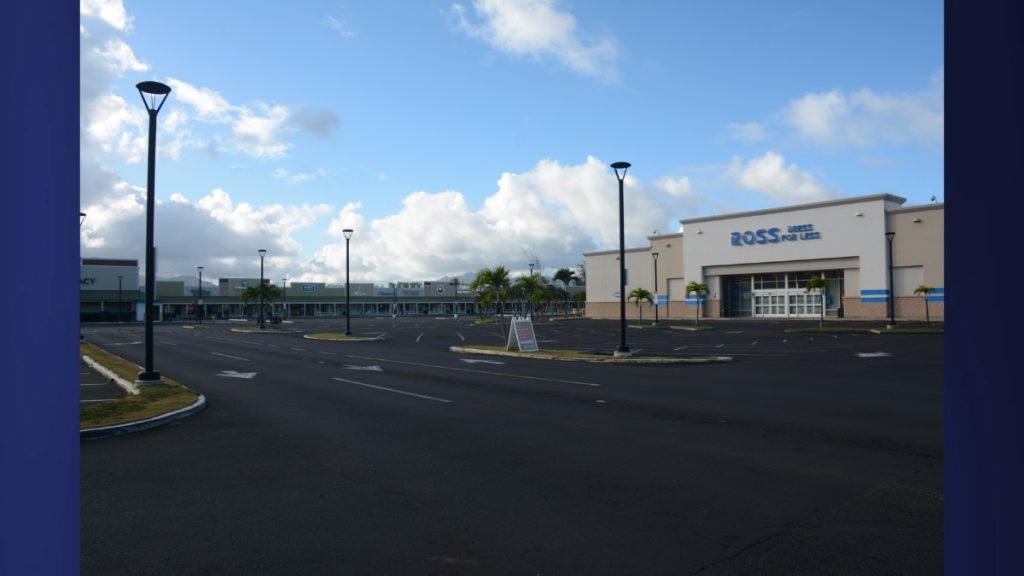
At higher elevation, the public congregated at both Poli’ahu Heiau and the Wailua Falls parking lot, eagerly anticipating the first tsunami wave scheduled for 7:10 p.m. for Kaua’i, the first major Hawaiian island to feel the tsunami impacts.
Leann and Greg Cahall from Missouri were sitting on the lawn at Poliʻahu Heiau. They had arrived on Kauaʻi only a couple hours earlier, at 2:45 p.m., on a trip to celebrate their 44th wedding anniversary and Leann’s 65th birthday.
The couple was scheduled to check in at the cottages next to the Wailua River, but found themselves among various visitors from across Hawai’i and the mainland, all eagerly anticipating what might happen next.
“This is all kind of a surprise to us,” Greg Cahall said. “We’re here. We’re safe. And, we’re in Hawaiʻi, so it’s all good. It’ll be what it will be.”
They quickly reviewed a list of items they hope will be sufficient to weather the emergency.
“We got the rental car. We have the little bit of food we picked up when we got off the plane,” Greg Cahall said confidently. “So, we’ll be fine.”
His wife Leann Cahall added: “We’ll stay right here. We have a little beach blanket and a pillow, but we just hope everyone stays safe.”
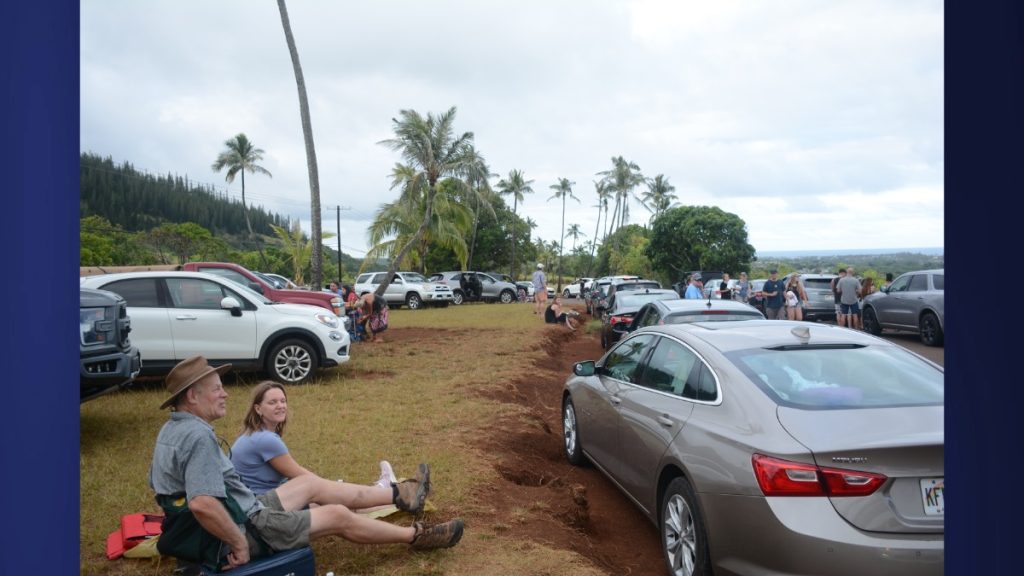
Visitor confusion was widespread, especially among those in vacation rentals who did not know where to access evacuation route information.
Amidst moments of chaos, neighbors assisted elders, while nurses transported the houseless to shelters. Drivers picked up commuters using public transportation, and families gathered in parking lots on hilltops, offering support to frazzled visitors.
There was some relief after clock struck 7:10 p.m. and the island did not experience waves of any significance.
After nearly six hours, the coastal roads and bridges were reopened after the county conducted a safety sweep of coastal areas when the all clear was given at 11:15 p.m. The Pacific Tsunami Warning Center had downgraded the tsunami warning to an advisory.
The Kauaʻi Police Department reported there were no injuries or arrests made during the response to the tsunami.
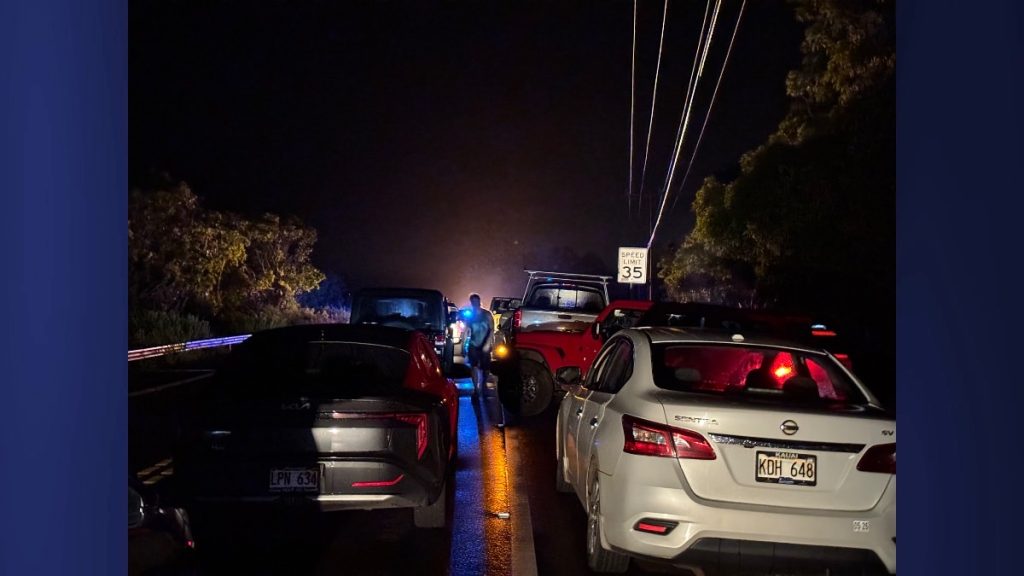
The Līhuʻe Airport never closed on Tuesday, although there were canceled and rerouted flights. At approximately 7:15 a.m. on Wednesday, flights arriving and departing out of the airport were running uninterrupted.
“There were flights that were canceled but rescheduled today, but no major issues,” said a spokesperson with Southwest Airlines.
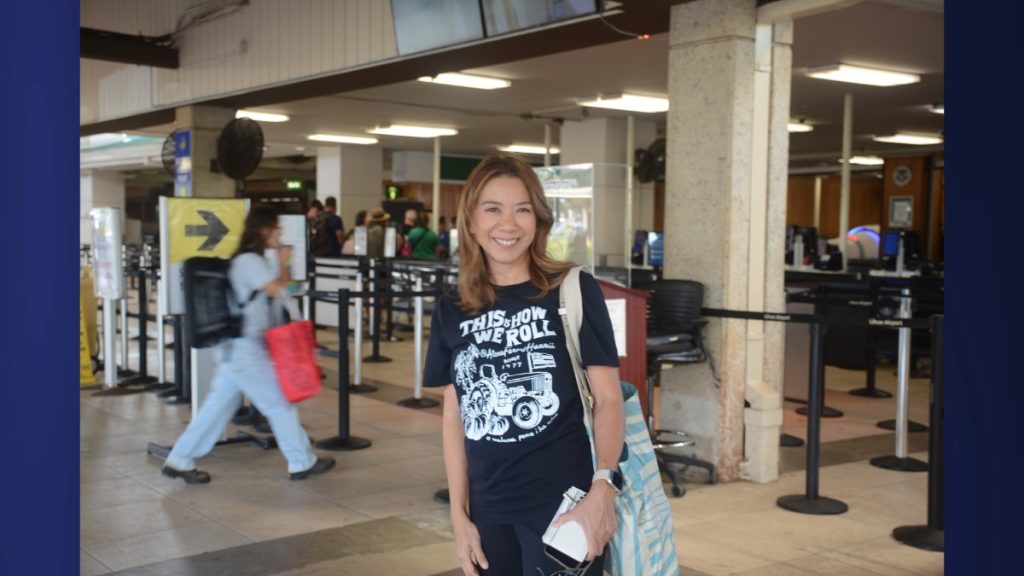
June Reese, the general manager at Kaua’i Shrimp, arrived from Honolulu and said she had no issues boarding her flight.
“When I checked in this morning, it gave me the option to switch my flight, but it didn’t say that my flight was delayed or any cancellations.”
Reese, who arrives in Kaua’i every Wednesday to check shrimp production in Hanapēpē, was eager to inspect Aloun Farms.
Located a quarter mile from the ocean, the shrimp ponds are constructed above the mean high tide line to prevent flooding or escapes.
“I was a little bit worried about the shrimp last night,” Reese said. “But no issues with the shrimp. We are so lucky because we are so close to the water.”
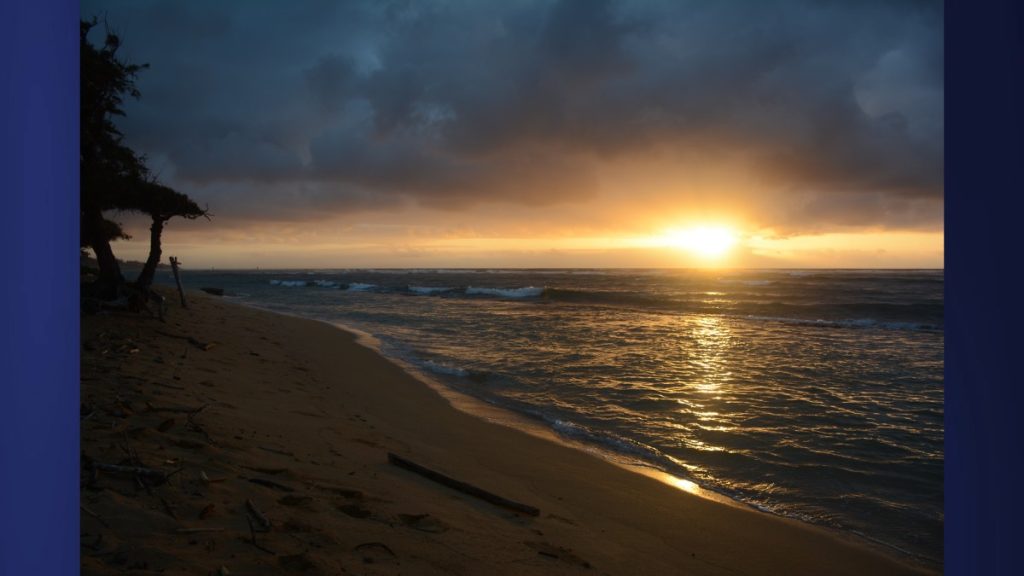
The Tsunami Advisory for the County of Kaua‘i canceled the tsunami advisory at 9 a.m. on Wednesday.
On Wednesday, Kawakami said in an email: “I also want to mahalo our residents and visitors for their patience, cooperation and trust in our emergency response efforts. Additionally, this type of response would not be possible without the amazing community we have here on Kaua’i.”



